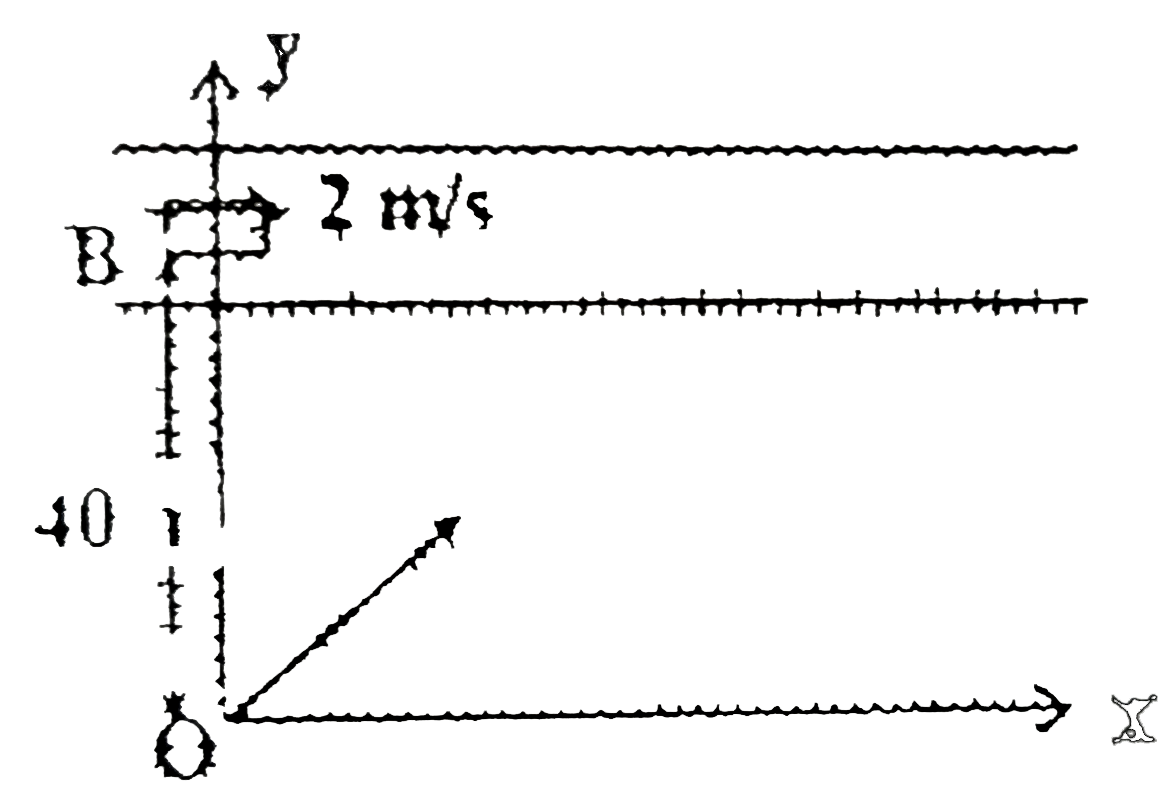Two balloons are moving in air with velocities v1={2tˆi+(t−2)ˆj)m/s and v2={(t−4)ˆi+tˆj}m/s then at what t balloons are moving parallel to each other:
5/4s
4/5s
10/3s
−3±√17s
The correct Answer is:C
Step by step video, text & image solution for Two balloons are moving in air with velocities v_(1)={2thati+(t-2)hatj)m//s and v_(2)={(t-4)hati+thatj}m//s then at what t balloons are moving parallel to each other: by Physics experts to help you in doubts & scoring excellent marks in Class 11 exams.
Updated on:21/07/2023Topper's Solved these Questions
- KINEMATICS 1BOOK - DC PANDEYCHAPTER - KINEMATICS 1EXERCISE - MCQ_TYPE
27 Videos
- KINEMATICS 1BOOK - DC PANDEYCHAPTER - KINEMATICS 1EXERCISE - COMPREHENSION_TYPE
19 Videos
- KINEMATICSBOOK - DC PANDEYCHAPTER - KINEMATICSEXERCISE - INTEGER_TYPE
11 Videos
- LAWS OF MOTIONBOOK - DC PANDEYCHAPTER - LAWS OF MOTIONEXERCISE - Medical entrances gallery
39 Videos
Similar Questions
Two particles are moving with velocities v1=ˆi+tˆj+ˆk and v2=tˆi+tˆj+2ˆkm/s respectively. Time at which they are moving perpendicular to each other is.____________(second)
View SolutionTwo particle are moving with velocity →v1=ˆi−2tˆj+ˆkm/s and →v2=4tˆi+tˆj+3ˆkm/s respectively. Time at which they are moving perpendicular to each other is ____________ (sec). (Round off to nearest integer).
View Solution
Knowledge Check
Two particles A and B are moving with constant velocities V1=ˆj and v2=2ˆi respectively in XY plane. At time t=0, the particle A is at co-ordinates (0,0) and B is at (-4,0). The angular velocities of B with respect to A at t=2s is (all physical quantities are in SI units)
A12rad/sB2rad/sC4rad/sD1rad/sVelocity of a particle moving in a curvilinear path varies with time as v=(2tˆi+t2ˆk)m/s. Here t is in second. At t=1 s
Aacceleration of particle is 8m/s2Btangential acceleration of particle is 6√5m/s2Cradial acceleration of particle is 2√5m/s2Dradius of curvature to the path is 5√52mTwo cars of same mass are moving with velocities v1andv2 respectively. If they are stopped by supplying same breaking power in time t1andt2 respectively then v1v2 is
At1t2Bt21t22Cmt1t2D√t1t2
Velocity of there particless A.B and C varies with time t as , vA=(2tˆi+6ˆj)m/svB=(3ˆi+4ˆj)m/s and vc=(6ˆi−4tˆj) regarding the pseudo force match the following table.

View SolutionA block B is floating in the river. The position of the block is as shown in figure at time t=0. Flow speed of river is 2m/s. A stone is thrown from point O at time t=0 with a velocity →V=(v1ˆj+v2ˆj+20)ˆkm/s.
(a) Find v1, v2 such that the stone hits the block.
(b) If the speed of throw is kept fixed, what is the maximum value of time t at which it is possible to throw the stone to bit the block.

View SolutionVelocity and acceleration of a particle at time t=0are u=(2ˆi+3ˆj)m/sanda=(4ˆi+3ˆj)m/s2 respectively. Find the velocity and displacement if particle at t=2s.
View SolutionVelocity and acceleration of a particle are v=(2ˆi−4ˆj)ms and a=(−2ˆi+4ˆj)ms2 Which type of motion is this?
View SolutionA particle is to move along a line at the constant velocity →v=(2m/s)ˆi−(3m/s)ˆj. During the motion of the particle, we assume that two forces are acting on it. If one of the forces is →F=(2N)ˆi+(−5N)ˆj, find the other force.
View Solution